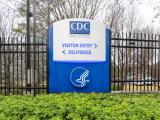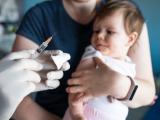Jun 21, 2002 (CIDRAP News) Caught between the unknown risk of a smallpox attack and concern about adverse vaccine reactions, the Advisory Committee on Immunization Practices (ACIP) yesterday recommended that only healthcare workers assigned to deal directly with a smallpox outbreak be vaccinated against smallpox.
The committee recommended vaccinations for teams of healthcare workers assigned to investigate smallpox cases and initiate control measures, and also for selected clinical workers in hospitals designated to receive the first patients in a smallpox outbreak. Such teams and hospitals are to be identified in bioterrorism response plans that states are now preparing with federal funds.
"Under current circumstances, with no confirmed smallpox, and the risk of an attack assessed as low, vaccination of the general population is not recommended, as the potential benefits of vaccination do not outweigh the risks of vaccine complications," the ACIP said in a written statement.
Past experience with the vaccinia vaccine indicates a death rate of about 1 in every 1 million recipients, but the risk could be higher today because there are many more people with weakened immune systems, the committee said. Routine smallpox vaccination in the United States was stopped in 1972.
The ACIP made its recommendations after a series of CDC-hosted public forums on the issue over the past 2 weeks. As a precaution against the risk of a bioterrorist attack, the ACIP in June 2001 had recommended smallpox immunization for laboratory workers who work with smallpox and other orthopox viruses. After the anthrax attacks last fall, the CDC asked the committee to consider revising the policy. The new recommendations will not become official policy until they are affirmed by the Centers for Disease Control and Prevention (CDC) and Health and Human Services Secretary Tommy Thompson.
Speaking at a press conference yesterday afternoon, the CDC's Julie Gerberding, MD, said, "The public health position I think has been clearly articulated by the ACIP, and the next step is to decide what ultimately will the federal policy look like within this context." The ACIP recommendations will be "taken very seriously," said Gerberding, who is co-director of the CDC's bioterrorism response program and acting deputy director of the National Center for Infectious Diseases.
At the press conference, ACIP Chairman John F. Modlin, MD, estimated that between 10,000 and 20,000 people would be offered the vaccine under the new recommendation. He and Gerberding said vaccinations would not begin until this fall at the earliest, and would be strictly voluntary. Modlin is a professor of pediatrics and medicine at Dartmouth Medical School in Lebanon, N.H.
The response teams eligible for vaccination may include "persons designated as medical team leader, public health advisor, medical epidemiologists, disease investigators, diagnostic laboratory scientist, nurse vaccinators, and security/law enforcement personnel," the ACIP statement said. Modlin said some police and "transport workers" may be included in response teams, but most firefighters, police, and other public safety workers would not be offered immunization. The committee also recommended that each state and territory have at least one smallpox response team.
Hospitals designated to receive smallpox patients should decide in advance which staff members would care for those patients so that they can be vaccinated, the committee said.
The ACIP plan does not change the CDC's smallpox response strategy of surveillance and ring vaccination (vaccination of primary and secondary contacts of exposed people), officials said. But Modlin said that in the event of an outbreak, "It's highly likely that our policy could change, and that we would certainly expect . . . to expand the number of individuals that we would expect to vaccinate in an outbreak situation."
Gerberding said that during the anthrax attacks, the CDC showed it can deliver vaccines and drugs from the national stockpile anywhere in the country within 12 to 24 hours. "What we're working on now is once it gets there, how does it get into the arms of the people who need to receive it?" she said. Part of the $1.1 billion recently allocated for state and local biodefense efforts will be used to plan for vaccine distribution and use, she added.
"The planning process has been started and we are expecting by the beginning of July for every state to have a plan for mass immunization," she said.
Gerberding also said the CDC will set up "a smallpox vaccine program oversight panel to monitor the use of vaccines." The panel will be assigned to ensure that the vaccine is used appropriately and safely and to gather safety and efficacy information.
In response to reporters' questions, Gerberding listed several reasons for not making smallpox vaccine available to the public. First, she said, "This is an investigational vaccine, and that means that to use it requires informed consent and all of the kinds of protocols that one would use for any sort of clinical research program."
Second, the ACIP's assessment is that "the general public would have a greater risk of sustaining a serious adverse event from receiving the vaccine than they would from catching smallpox if there were a bioterrorism event."
Third, she said, "The vaccine is new, and we actually don't know everything we need to know about the safety and efficacy of the vaccine." (The existing, decades-old vaccine stockpile was produced from calf lymph, and plans call for diluting the vaccine to increase the number of doses from about 15.4 million to 77 million. The dilution step makes it necessary to classify the vaccine as investigational, officials have said. The federal government is buying 209 million additional doses of vaccine from Acambis; that vaccine is considered investigational because it is being produced in cell culture instead of from calves.)
Finally, Gerberding cited the fact that vaccinated people can pass the vaccinia virus to other, unvaccinated people, who could be at risk for serious complications. "If you get immunized with vaccinia, you can infect people around you from your vaccinia scab. And so while you may accept the risk for yourself, you would be imparting a risk to your contacts, and that makes this a little different from other vaccines as well."
Modlin said the ACIP members "all have a degree of discomfort" over the impossibility of estimating the risk of a smallpox attack. "We are assuming . . . that it's low, and I think the decision that we made was a balanced one, that balanced that low or very low risk with the known risk from the vaccine," he said.
Gerberding added two qualifiers: "One is that the policy recommendations may need to change as the risk assessment changes, and, second, the pubic health policy recommendations that we received today have to be looked at in the context of homeland security and national defense issues."
Modlin and Gerberding were asked whether those who will be vaccinated will be asked to contribute blood serum in order to increase the supply of vaccinia immune globlulin (VIG), which is used to treat serious adverse reactions to the vaccine. Gerberding replied that there is no plan to do that at present, but "it's an option that will be considered."
The ACIP statement says there is enough VIG on hand now to treat about 600 serious adverse events, the number that would be expected in vaccinating 4 million to 6 million people.
In addressing other questions, Modlin said that people who were vaccinated in the past probably still have some protection against smallpox. "If we believe that there would still be some risk of acquiring smallpox, and even some risk of having serious disease and dying from it, in all likelihood it would be a lot less than for someone who had not ever received any vaccine in the past," he said.
He also said that someone who had no adverse reaction to a previous vaccination would have little risk of such a reaction to revaccination. "There still would be some very small residual risk of adverse reaction," he said.
See also:
ACIP statement, "Supplemental Recommendation of the ACIP: Use of Smallpox (Vaccinia) Vaccine, June 2002"
http://www.bt.cdc.gov/agent/smallpox/vaccination/acip-guidelines.asp
Transcript of the CDC's Jun 20 press conference
http://www.cdc.gov/media/transcripts/t020620.htm



















